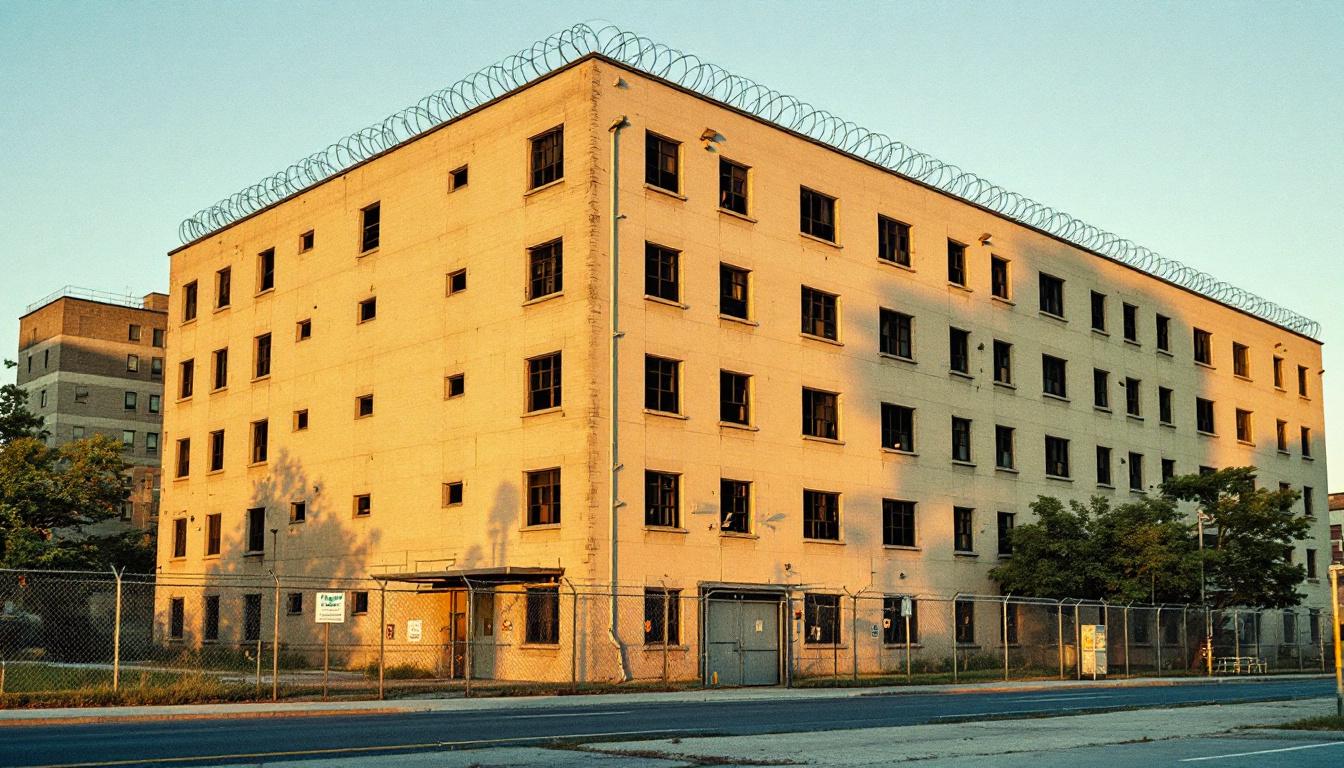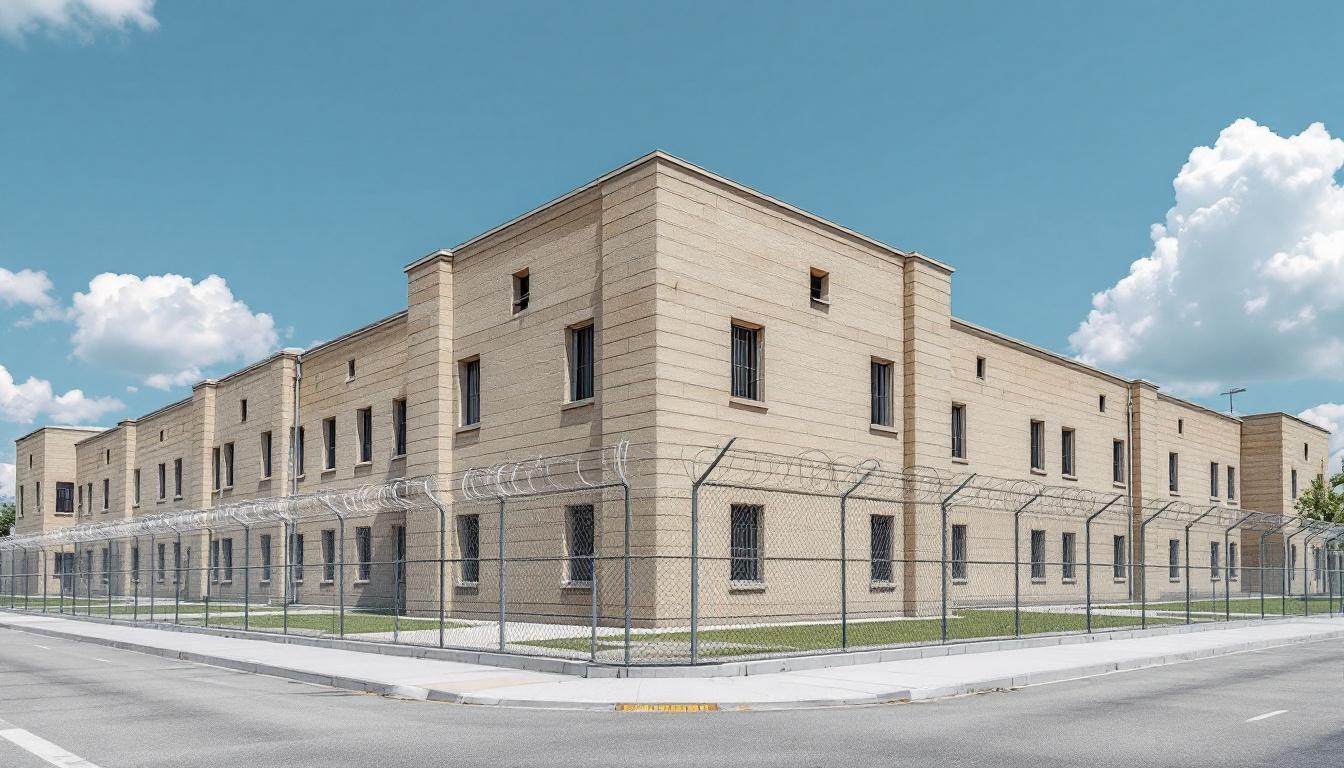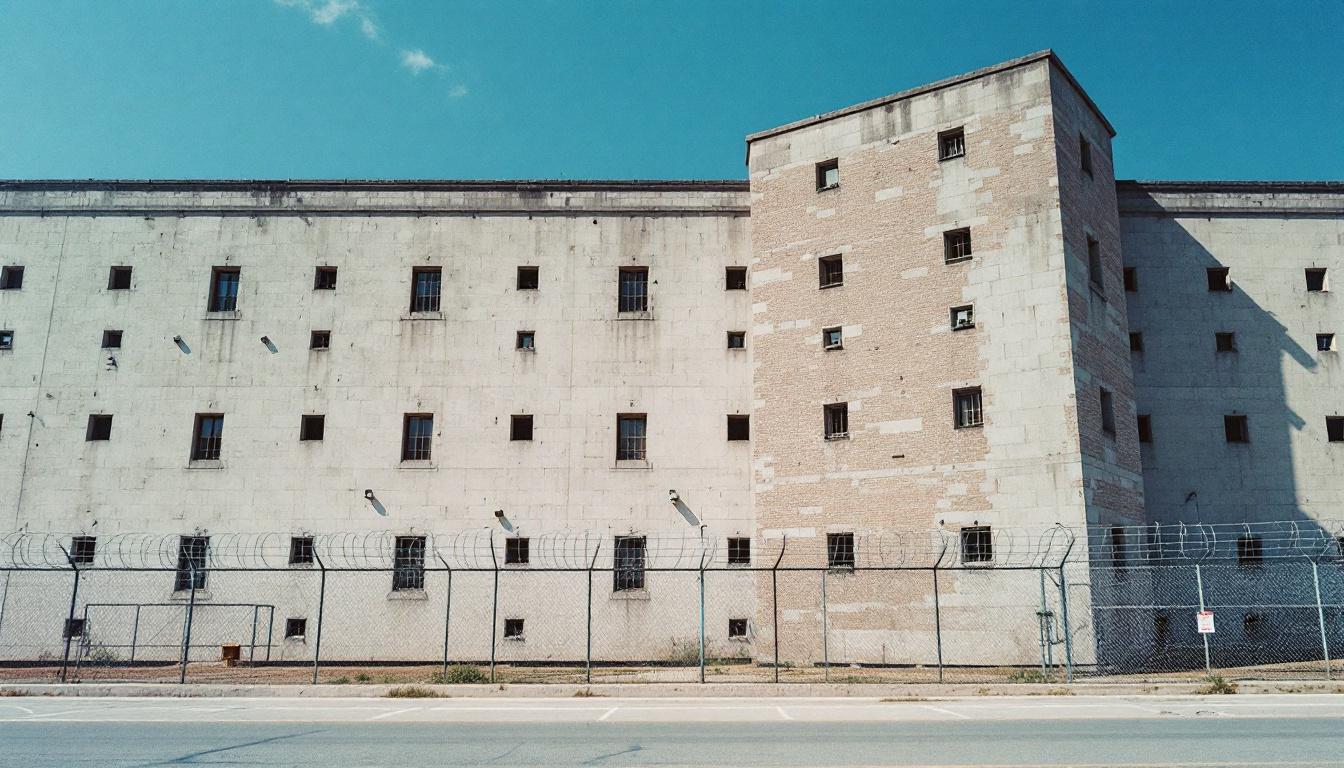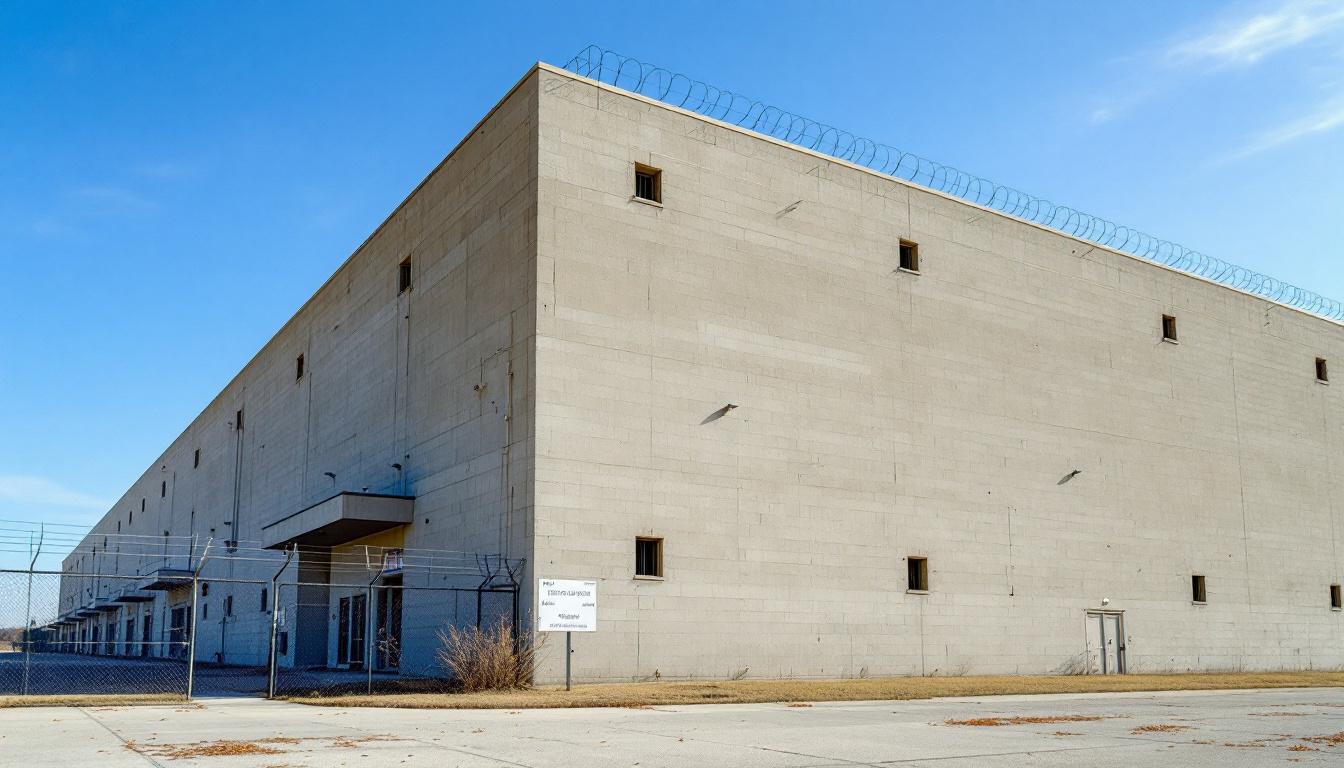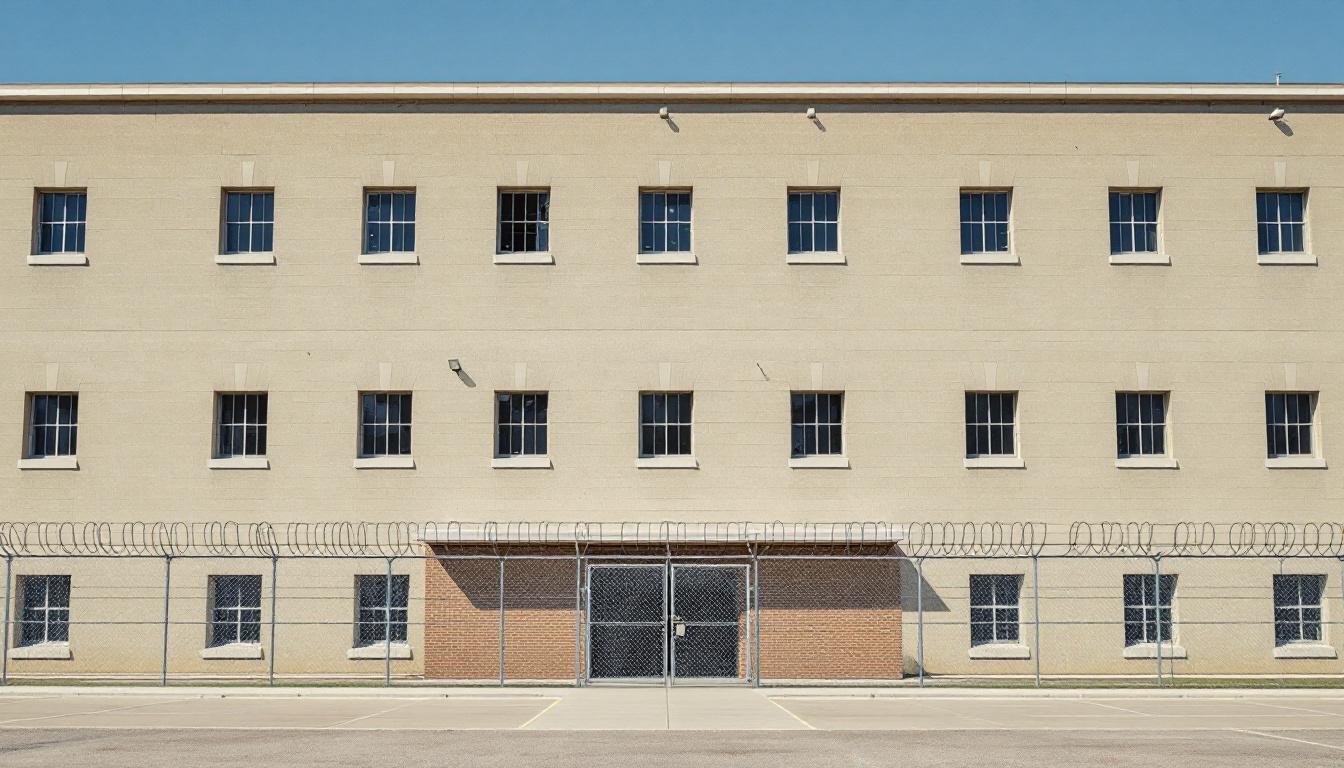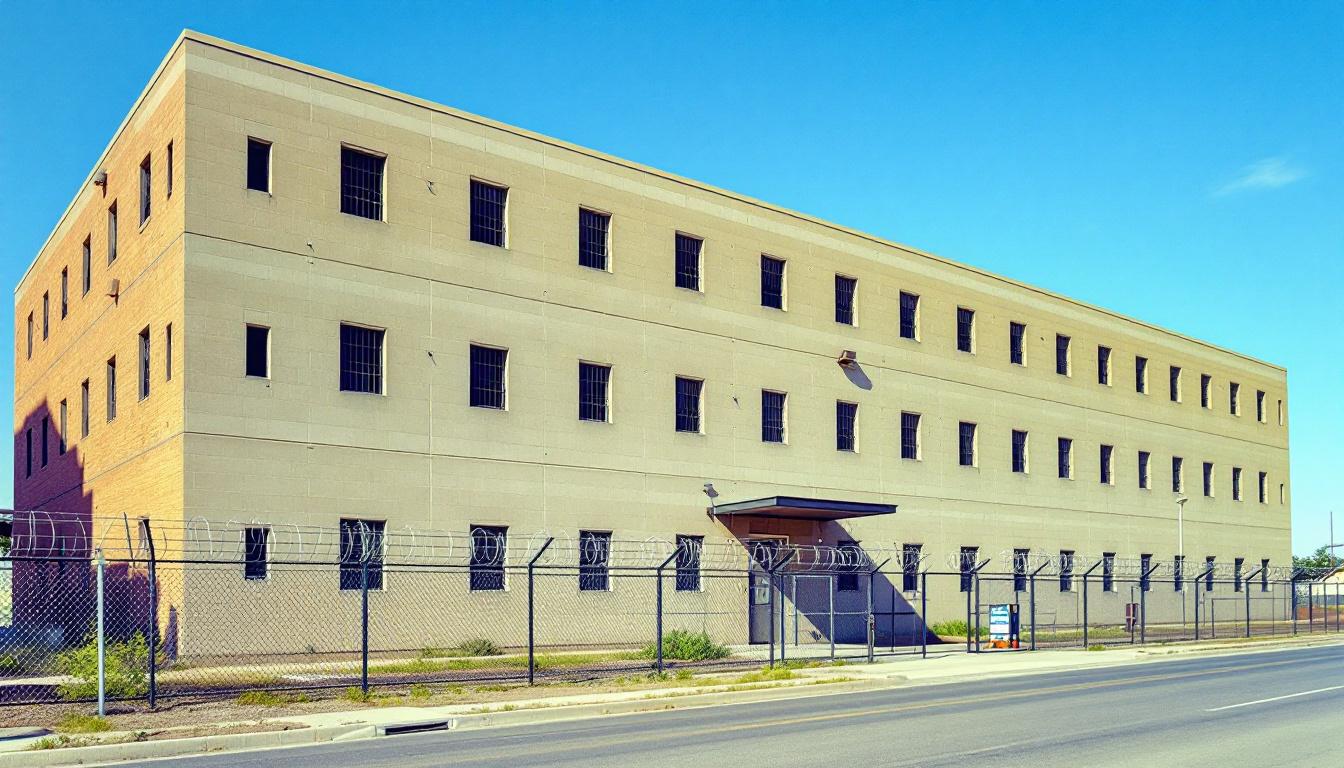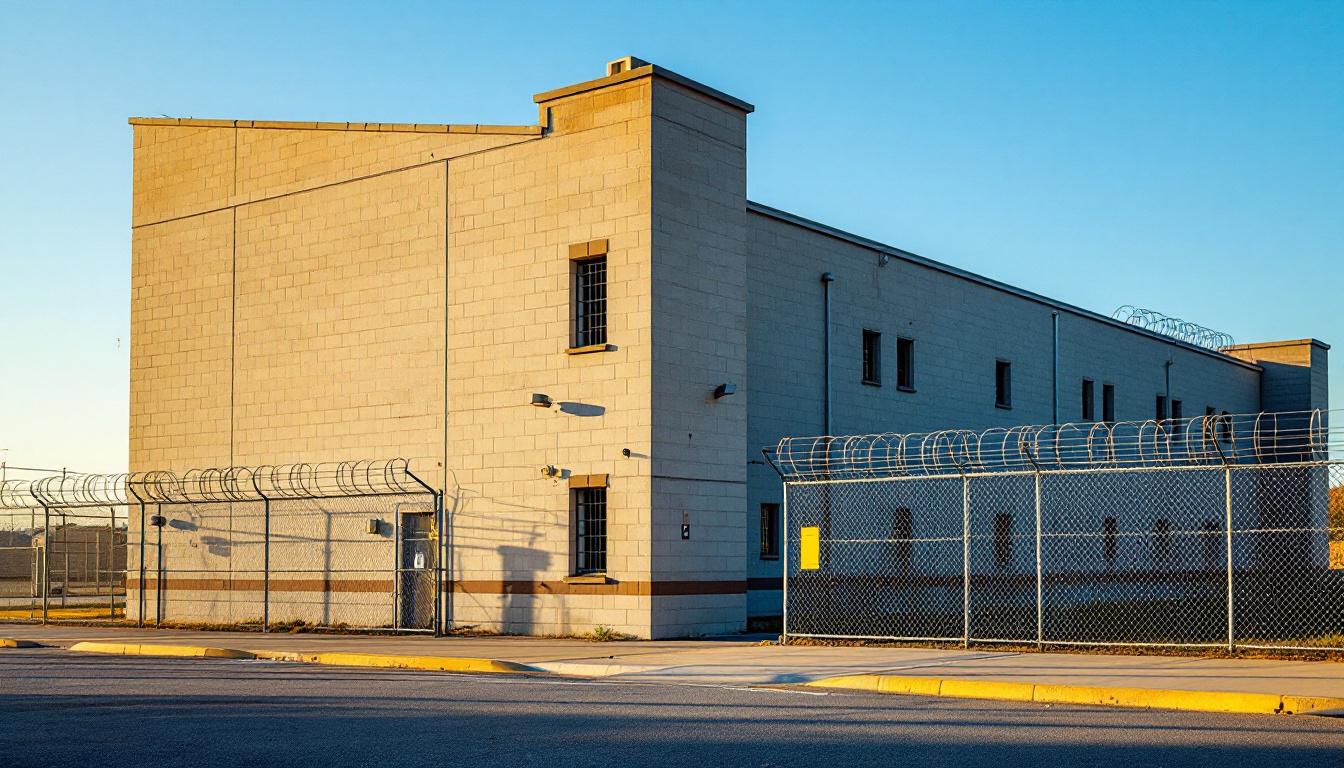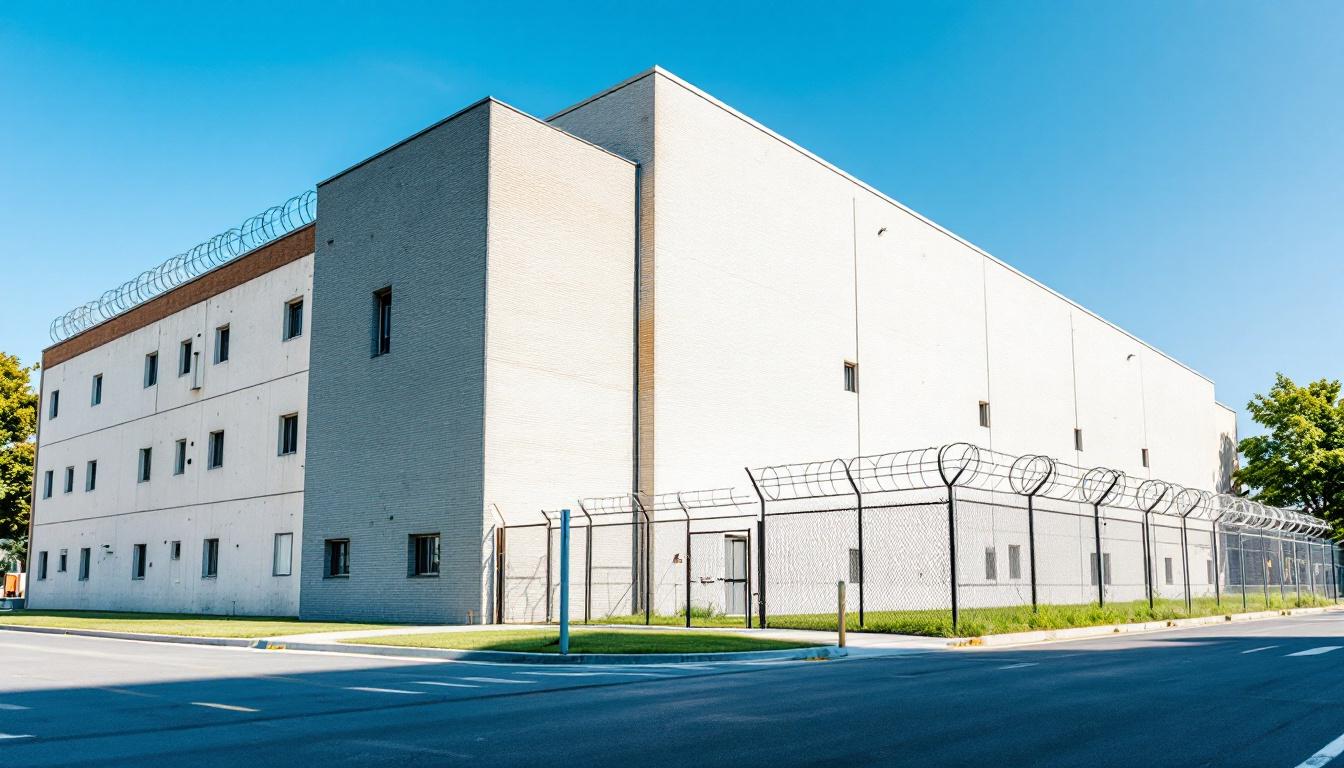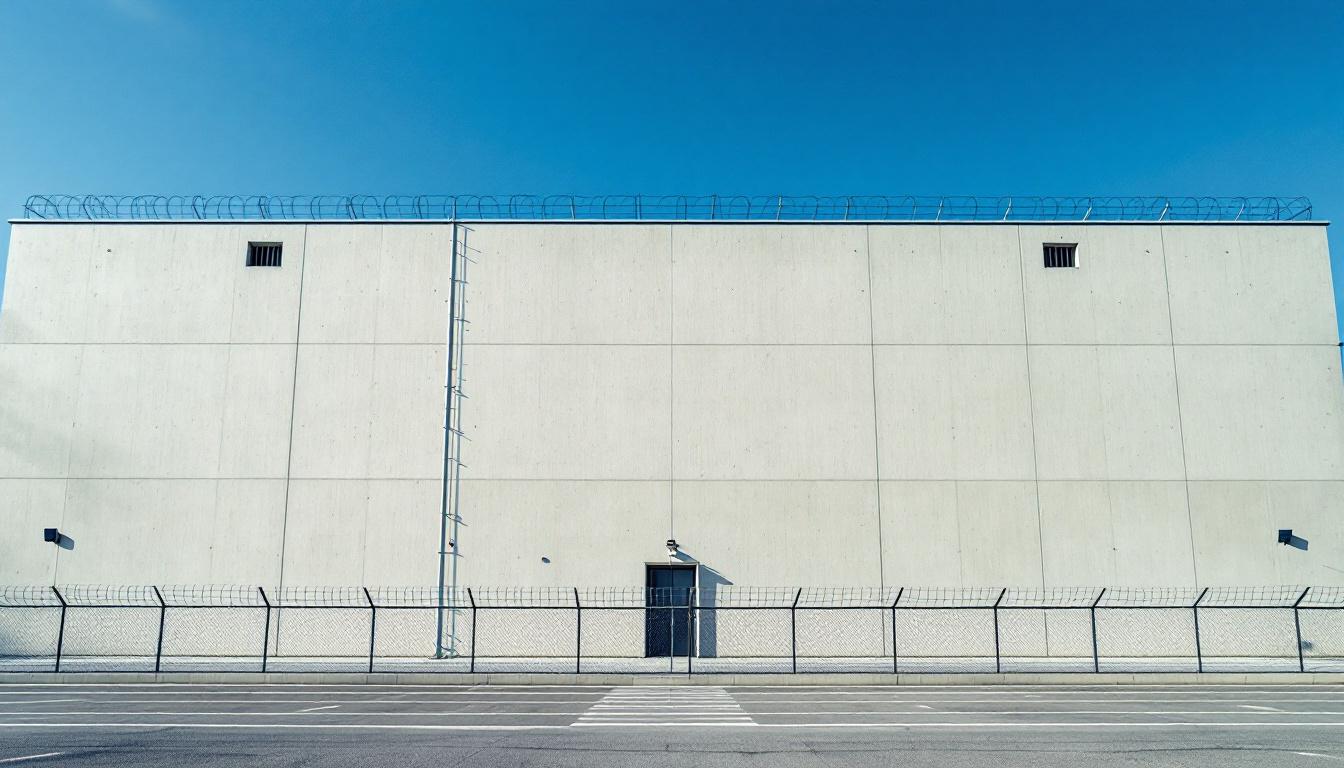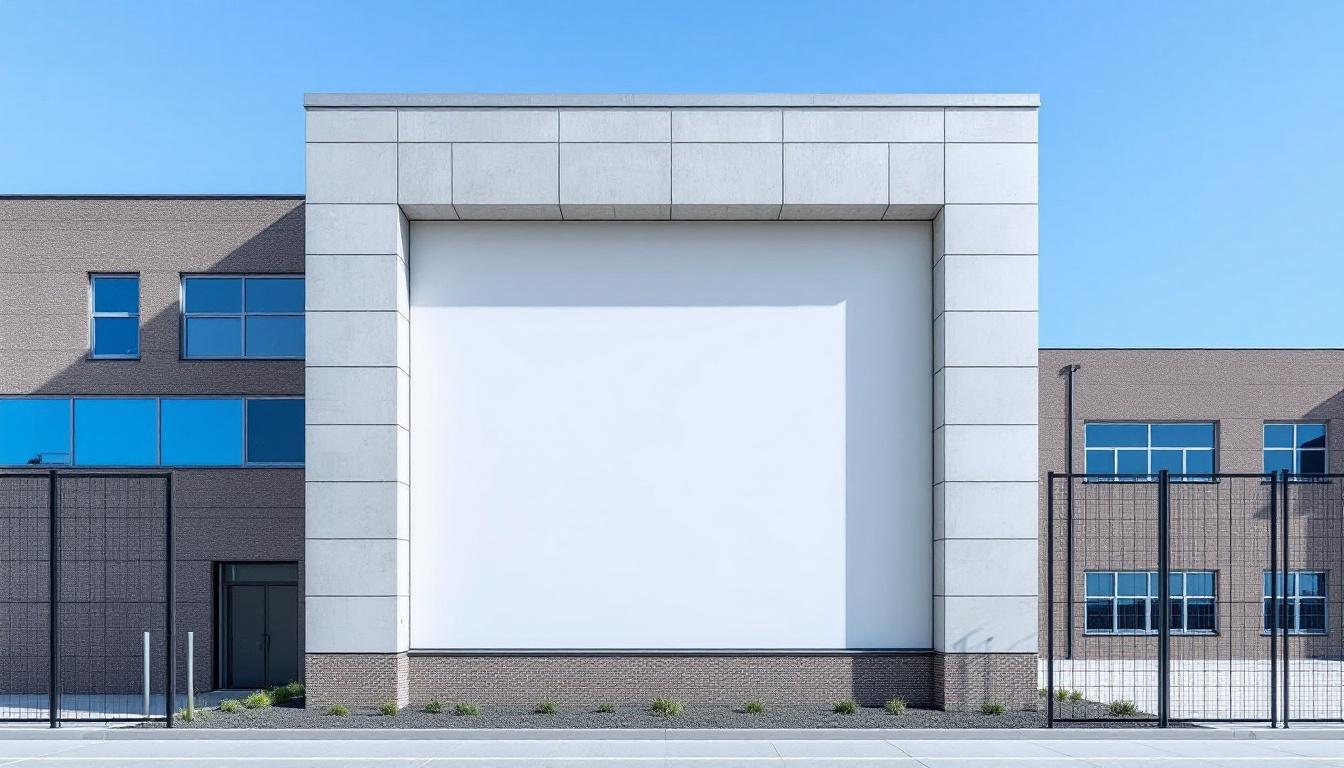
Quick Navigation
How to contact an inmate at Oklahoma Department of Corrections
This comprehensive guide will walk you through how to connect with an inmate at Oklahoma Department of Corrections. Follow the steps below to find an inmate and send letters and photos:
- Search for the inmate using our search tool below
- Create your account or log in to Penmate
- Write your message (up to 6,000 characters)
- Send instantly - inmates receive printed copies daily
Find an Inmate
Search for an inmate to start communicating today
Tip: You can search by first name, last name, or inmate ID number
To contact a person at Oklahoma Department of Corrections start by searching for the person on the official facility website. Perform a search by following these steps:
- Step 1: Enter their first name and last name into the search form and click "Search"
- Step 2: Locate their inmate record
- Step 3: Write down their Inmate ID and any housing information provided
Important! Be sure to enter the person's full name. Nicknames should not be used.
How to Send Messages to Inmates

You can use your phone or computer to send emails, letters, and photos to an inmate. Messages are sent electronically to inmate tablets or kiosks at the facility. If you would like to send a message, start by searching for an inmate at Oklahoma Department of Corrections.
Sending Photos and Postcards

A great way to send love and support to a loved one at Oklahoma Department of Corrections is to send photos and postcards. It only takes a few minutes to send photos from your phone and it makes a huge difference. You can also mail postcards with words of support and inspiration, or design your own postcard for special moments like birthdays and holidays.
Important! Be sure not to send any explicit photos or they may not be approved by the facility. You can also use a photo printing app like Penmate to make sure your photos are printed at the correct size (4x6 or 3x5) and are mailed according to the rules and regulations of Oklahoma Department of Corrections.
Frequently asked questions about Oklahoma Department of Corrections
-
How long does it take to deliver a message?
If you're sending an email message your letter is usually delivered within 24-48 hours. For messages sent via mail you should expect delivery within 3-7 days. All messages will need be approved by Oklahoma Department of Corrections.
-
How much does it cost to send a message to Oklahoma Department of Corrections?
You can send a message free using your phone or mail a message via USPS for the price of a $0.60 stamp and envelope. You can also purchase credits or e-stamps from services starting at $1.99.
-
What services can I use to contact an inmate at Oklahoma Department of Corrections?
Penmate
You can use Penmate to send letters and photos to an inmate from your phone. It's an easy way to stay in touch during your loved one's incarceration. Use the inmate locator to find an inmate's location and contact information, then you can send messages within a few minutes.
Securus messaging
Securus may be another option for communicating with an inmate at Oklahoma Department of Corrections. You can create a friends and family account and purchase credits to send messages. All messages will be reviewed and must be approved by the facility.
JPay
Some county jails and state prisons may support sending messages with JPay. You must register an account with the system, find your loved one, and purchase stamps to send messages. For some locations you can also attach photos.
Smart Jail Mail
You may also check if Smart Jail Mail is available at Oklahoma Department of Corrections. Smart Jail Mail is operated by Smart Communications and has contracted with some state and county jails. After purchasing credits, your messages and photos are sent to the facility, printed out, and then handed out to your loved one.
-
What is the mailing address of Oklahoma Department of Corrections?
Mailing address:
Oklahoma Department of Corrections
601 S 124th St W
Taft, OK 74463
Phone: (918) 682-7841Business hours:
- Monday: 8:00 AM – 5:00 PM
- Tuesday: 8:00 AM – 5:00 PM
- Wednesday: 8:00 AM – 5:00 PM
- Thursday: 8:00 AM – 5:00 PM
- Friday: 8:00 AM – 5:00 PM
- Saturday: Closed
- Sunday: Closed
-
What are the visiting hours at Oklahoma Department of Corrections?
Visiting hours at Oklahoma Department of Corrections vary by housing unit and security level. Generally, visits are scheduled on weekends and holidays, with some facilities offering weekday visits. Contact the facility directly at (918) 682-7841 or check their website for the current visiting schedule. Visits typically last 30-60 minutes and must be scheduled in advance.
-
What items are prohibited when sending mail to Oklahoma Department of Corrections?
Prohibited items typically include: cash, personal checks, stamps, stickers, glitter, glue, tape, staples, paperclips, polaroid photos, musical or blank greeting cards, hardcover books, magazines with staples, and any items containing metal or electronics. Only send letters on plain white paper with blue or black ink. Photos must be printed on regular photo paper (no Polaroids). Always check with Oklahoma Department of Corrections for their specific mail policies.
-
How do I send money to an inmate at Oklahoma Department of Corrections?
You can send money to an inmate at Oklahoma Department of Corrections through several methods: 1) Online using JPay, Access Corrections, or the facility's approved vendor, 2) Money orders mailed directly to the facility with the inmate's name and ID number, 3) Kiosks located in the facility lobby, or 4) Over the phone using a credit or debit card. Fees vary by method, typically ranging from $2.95 to $11.95 per transaction.
-
Can I schedule a video visit with an inmate at Oklahoma Department of Corrections?
Many facilities now offer video visitation as an alternative to in-person visits. At Oklahoma Department of Corrections, video visits may be available through services like Penmate, Securus Video Connect, GTL, or ICSolutions. Video visits typically cost $10-20 for 20-30 minutes and must be scheduled in advance. You'll need a computer or smartphone with a camera and reliable internet connection. Contact the facility for their specific video visitation policies and approved vendors.
-
What identification do I need to visit an inmate at Oklahoma Department of Corrections?
All visitors must present valid government-issued photo identification such as a driver's license, state ID, passport, or military ID. Minors must be accompanied by a parent or legal guardian who can provide the minor's birth certificate. Some facilities require visitors to be on the inmate's approved visitation list, which may require a background check. Contact Oklahoma Department of Corrections for specific ID requirements and visitor approval procedures.
-
How can I find out an inmate's release date?
To find an inmate's release date at Oklahoma Department of Corrections, you can: 1) Use the online inmate search tool if available, 2) Call the facility's records department, 3) Contact the inmate's case manager or counselor, or 4) Have the inmate provide this information during a call or visit. For privacy reasons, some facilities only release this information to immediate family members.
Facility Overview
Contact Information
Oklahoma Department of Corrections601 S 124th St W
Taft, OK 74463
Phone: (918) 682-7841
Official Website

About Oklahoma Department of Corrections
Educational programming, vocational training, and behavioral intervention services form the cornerstone of operations at Jess Dunn Correctional Center, where the facility's approach to offender management emphasizes skill development and community reintegration preparation. Located in Dallas, Oklahoma, this correctional facility typically offers individuals access to various rehabilitation opportunities designed to address underlying factors that may contribute to criminal behavior while building practical capabilities for successful community transition.
The facility's role within Oklahoma's correctional system generally reflects the state's broader commitment to balancing public safety with rehabilitation-focused programming. Jess Dunn Correctional Center often provides educational services that may include adult basic education, GED preparation, and various vocational training programs aimed at developing marketable job skills. Mental health services and substance abuse treatment programs typically complement these educational offerings, creating a comprehensive approach to addressing the diverse needs of the incarcerated population. The facility's location in Dallas allows for potential community connections that may support reentry efforts, though specific partnerships and programs can vary based on available resources and operational priorities.
Within Oklahoma's south-central region, this OK correctional facility generally operates as part of a network designed to serve individuals from surrounding counties while maintaining security standards appropriate for its designated custody levels. The facility's programming approach typically emphasizes personal accountability and positive behavioral change, with various support services that may include counseling, life skills training, and pre-release planning assistance to help prepare individuals for their eventual return to the community.
Programs & Services
Within Oklahoma's correctional landscape, the breadth of developmental opportunities reflects a comprehensive approach to individual transformation and skill acquisition. The facility's programming philosophy centers on addressing diverse needs through multiple pathways, recognizing that meaningful change occurs when individuals can access varied forms of personal and professional development. This multifaceted approach typically encompasses educational advancement, practical skill development, and spiritual growth opportunities designed to prepare participants for successful community reintegration.
Educational advancement forms a cornerstone of available opportunities, with programs often including basic literacy instruction, GED preparation, and post-secondary educational pathways that enable individuals to pursue academic goals. Furthermore, vocational training opportunities may provide hands-on experience in marketable trades, allowing participants to develop technical competencies that align with regional employment demands. These practical skill-building initiatives typically focus on industry-relevant training that can translate directly into post-release career opportunities.
The comprehensive nature of programming extends beyond academic and vocational development to include supportive services that address personal growth and practical life skills. Faith-based programs often provide spiritual guidance and community connection for those seeking such support, while specialized training in areas such as forklift operation and upholstery may offer additional pathways to employment readiness. These diverse opportunities collectively create an environment where individuals can pursue multiple avenues of self-improvement, developing both the practical skills and personal foundation necessary for successful community reentry.
Daily Life & Visitation
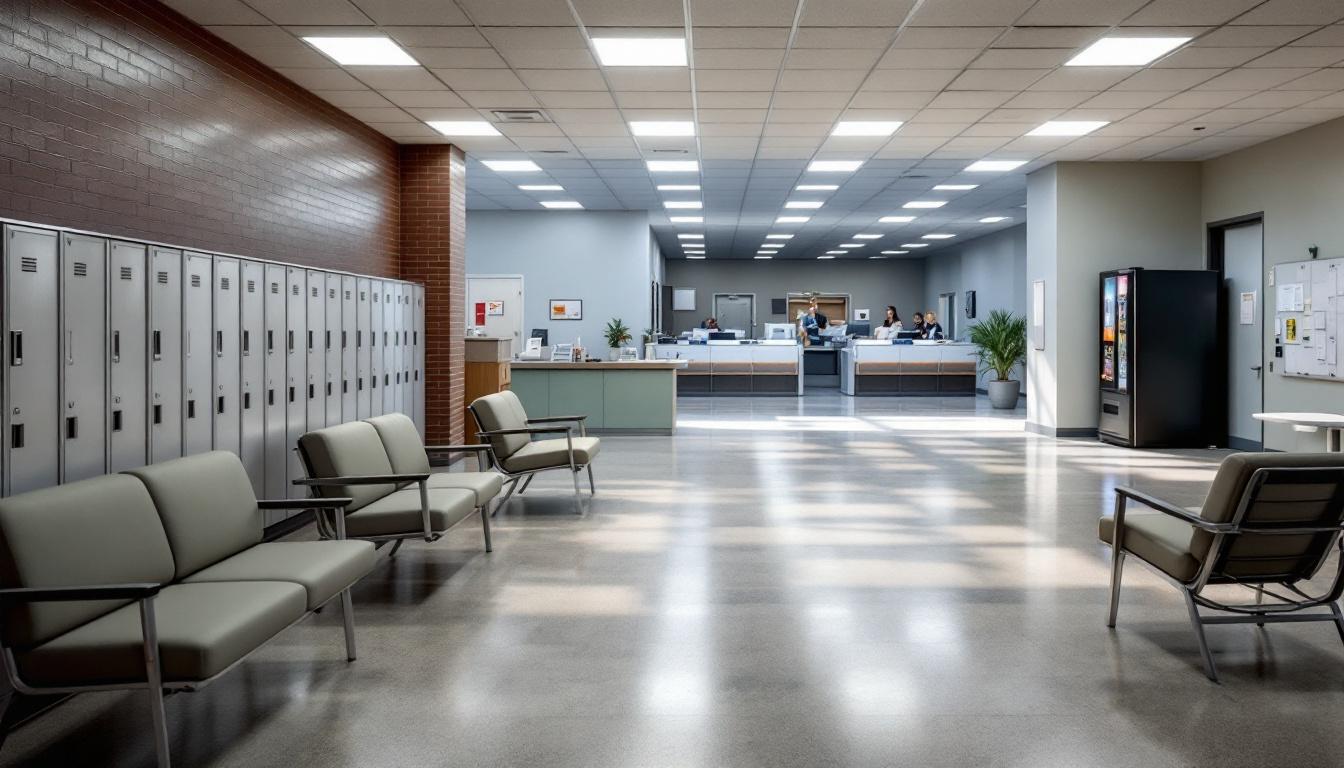
The rhythmic sound of institutional announcements punctuates each day, serving as both timekeeper and guide for the hundreds of individuals who currently call this Oklahoma correctional facility home. Daily routines at the facility typically begin before dawn with security counts and continue through a structured schedule that encompasses meals, work assignments, and programming opportunities. The institutional day generally flows from early morning wake-up calls through evening lockdown, with individuals moving between various areas of the compound according to predetermined schedules that maintain both security and order.
Living accommodations within the facility typically consist of multi-person housing units where individuals share sleeping quarters, common areas, and bathroom facilities. These housing units generally feature basic furnishings including beds, storage areas, and writing surfaces, while individuals may often possess approved personal items such as photographs, letters, and commissary purchases. Furthermore, the dining arrangements usually involve scheduled meal times in communal dining halls, where individuals receive meals that meet basic nutritional requirements and may accommodate certain dietary restrictions or religious observances.
Although the institutional environment maintains necessary security protocols, various programs and activities offer structure and engagement throughout the week. Work assignments may include facility maintenance, kitchen duties, laundry services, or other operational roles that provide individuals with daily responsibilities and, in many cases, modest compensation. Recreation opportunities typically encompass outdoor exercise periods, indoor recreational activities, and access to library resources, while visitation policies generally allow for scheduled family visits and phone communications that help maintain important connections with loved ones outside the facility walls.
Ready to Connect?
Start communicating with your loved one today
Search for an Inmate
